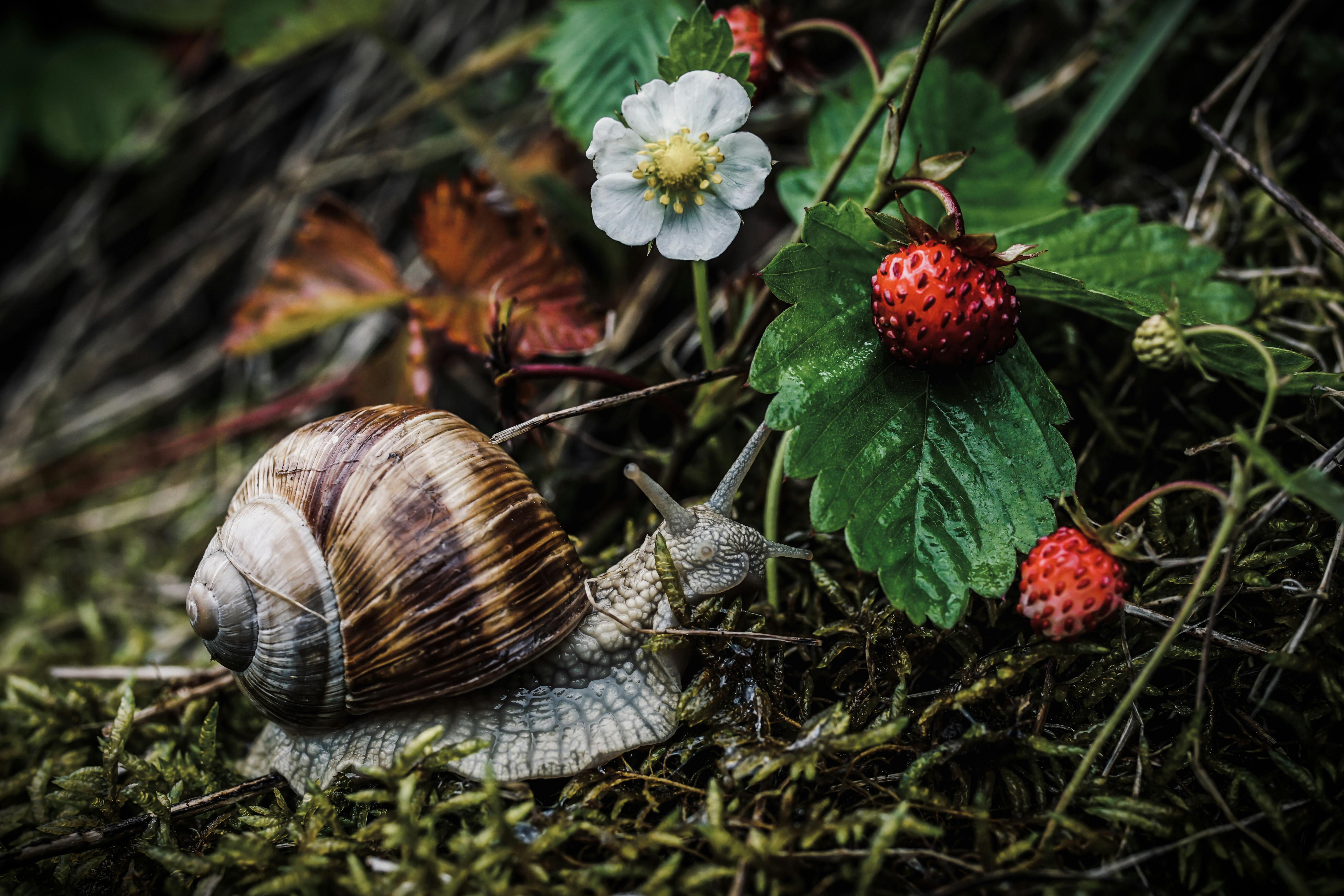Strawberries are a popular and delicious fruit that can be grown in a variety of climates. One important factor for successful strawberry cultivation is the amount of sunlight the plants receive. In this article, we will explore how much sunlight strawberry plants need to produce healthy and abundant fruit.Strawberry plants need 6 to 8 hours of direct sunlight per day in order to produce the best yields. If the plants don’t receive enough sunlight, they will produce fewer and smaller berries.
What Type of Sunlight is Best for Strawberry Plants?
Strawberry plants require at least 6-8 hours of direct sunlight each day in order to thrive. Full sun is best, meaning the plants should get direct sunlight for most of the day. Partial shade is also acceptable, but the plant will not produce as much fruit and may not grow as vigorously. When planting strawberries, it is important to choose an area that receives plenty of sun throughout the day.
When growing strawberries in a pot or other container, make sure to choose a location that receives full sun for most of the day. The pot should be placed in a spot where it will receive at least 6-8 hours of direct sunlight each day. If necessary, rotate the pot regularly to ensure even exposure to the sun’s rays.
It is also important to note that too much direct sunlight can be harmful to strawberry plants. If possible, try to find a location where the plant will receive some shade from nearby trees or structures during particularly hot days. This will help prevent the plants from becoming stressed or damaged by extreme heat and sunlight.
Overall, providing strawberry plants with plenty of direct sunlight is essential for healthy growth and successful fruit production. However, it is important to find a spot that offers some shade during especially hot days in order to ensure optimum health for your strawberry plants.
What Happens if Strawberry Plants Don’t Get Enough Sunlight?
Strawberry plants require a lot of sunlight to survive and thrive. Without enough sunlight, the plants will suffer from stunted growth, an inability to produce fruit, and even death.
Without adequate sunlight, the plant can become spindly and weak as it undergos photomorphogenesis. Photomorphogenesis is a process where the plant is unable to produce chlorophyll and other pigments in its leaves because of lack of light. As a result, the leaves become pale and yellowish in color.
Stunted growth is also a common symptom when strawberry plants don’t get enough sun. The plant will not grow at normal rates and will remain small. This can lead to small fruits with low nutritional value that are not suitable for consumption or sale.
When strawberry plants don’t receive enough sunlight, they are also unable to produce fruit properly. The flowers may open but fail to set fruit because of this lack of light exposure. This can be devastating for farmers who rely on their crops for income.
Finally, without enough sunlight, strawberry plants can die prematurely due to stress from dehydration or nutrient deficiencies caused by lack of light exposure. Ultimately, it is important that strawberry growers provide their plants with adequate amounts of sun in order for them to reach their full potential and yield maximum fruit production.
Does Too Much Sunlight Hurt Strawberry Plants?
Strawberries are one of the most popular fruits to grow in gardens and plots, but they require special care to ensure they don’t suffer damage from too much sunlight. Strawberries will need at least six hours of direct sunlight a day, though more is not necessarily better. While too little light can cause the plants to become spindly and weak, too much light can also put the plants at risk of sunburn, which can damage or even kill the plant.
The leaves of strawberry plants are particularly susceptible to sunburn. The leaves will begin to wilt or develop brown spots if they are exposed to too much sunlight. Too much sun can also cause the fruit itself to become sunburned, leading to blemishes on the skin and potential mold growth that can ruin the fruit.
To protect your strawberry plants from too much sunlight, it’s important to make sure that they have access to some shade during the hottest parts of the day. Planting your strawberries near taller plants or trees that will provide some protection from direct sunlight can help keep them safe from harm. You should also try to water your strawberry plants regularly; this helps keep their soil moist and cool which helps reduce stress caused by hot weather or too much sunlight.
In general, as long as you make sure that your strawberry plants get at least six hours of direct sunlight per day and have access to some shade during hot afternoons, they should do fine. If you notice any signs of distress due to too much sunlight – such as wilting or brown spots on leaves – then you may want to take steps to provide additional shade for your strawberries until they recover.
The Benefits of Planting Strawberries in Full Sun
Planting strawberries in full sun can provide a range of benefits to the plant and its fruit. When planted in a sunny spot, strawberries will receive ample amounts of direct sunlight, which is essential for growth and development. Sunlight helps the plant produce energy through photosynthesis, allowing it to grow larger and produce more fruit. Additionally, sunlight allows for beneficial pollinators like bees to find the strawberry blossoms and carry pollen from one flower to the next, aiding in fertilization.
Fruit from strawberry plants grown in full sun will also be larger and juicier than those grown in partial shade or low light conditions. This is because the more direct sunlight they receive, the better they are able to photosynthesize and create sugars that give their fruits more flavor and sweetness. The plants themselves will also be healthier as a result of receiving ample amounts of sunlight, with stronger stems and greener foliage.
Full sun also helps protect the strawberry crop from various pests and diseases that can easily spread when humidity levels are high. This is because direct sunlight helps dry out moisture on leaves that bugs or fungal diseases feed on, making it harder for them to survive. Additionally, planting strawberries in full sun gives them enough heat to ripen quickly before any of these pests have a chance to damage them.
Finally, growing strawberries in full sun can make harvest time much easier as the fruits will be clustered together in one area instead of scattered throughout the garden bed due to partial shade or low light conditions. This makes it much simpler for gardeners to spot ripe fruits that are ready for picking without having to search through every corner of their garden beds.
Overall, planting strawberries in full sun provides numerous benefits that help ensure strong growth and quality fruit production throughout the season.

Protecting Strawberries from Too Much Sun
Strawberries are a delicious and nutritious treat, and they also make a great addition to any garden. However, too much sun can damage strawberries, leading to smaller yields and an overall lower quality of fruit. To protect your strawberries from too much sun, there are several methods you can employ.
Provide Shade
One of the most effective ways to protect strawberries from too much sun is to provide some shade. You can use shade cloths or other types of coverings to reduce the amount of direct sunlight that reaches the plants. Additionally, planting taller plants around the strawberry patch can help provide some natural shade as well.
Mulch
Mulching your strawberry patch can also help protect it from too much sun. Spread a layer of mulch around the base of the plants to help reflect some of the sunlight away from them and keep their roots cool. Make sure you use an organic mulch such as straw, grass clippings, or pine needles for best results.
Water Regularly
Watering your strawberry patch regularly is also important in protecting it from too much sun. Keeping the soil moist will help keep the plants cool and reduce stress due to heat. Make sure you water in the mornings so that any excess water has time to evaporate before nightfall.
By using these simple methods, you can protect your strawberry patch from too much sun and ensure a bountiful harvest of sweet and juicy berries!
Partial Shade OK for Growing Strawberries?
Yes, growing strawberries in partial shade is possible. Strawberries need at least 4-6 hours of sunlight each day to produce a good crop of fruit, but they can also tolerate some shade. If the area receives more than 6 hours of direct sun, it may be best to choose a variety that is more tolerant of shade. When planting in partial shade, choose a variety that does not require full sun for optimal fruit production.
When growing strawberries in partial shade, it’s important to make sure the soil is well-drained and remains consistently moist. Strawberries don’t tolerate dry soils and will need to be watered regularly if the area receives less than 6 hours of sunlight each day. Mulching around the plants with straw or other organic material can help keep moisture levels consistent and prevent weeds from competing with the plants for nutrients and water.
It’s also important to pay attention to airflow when planting in partial shade. Make sure there is good air circulation around the plants by avoiding overcrowding them. If necessary, prune back foliage to reduce humidity and allow air to circulate freely around the plants. This will help prevent disease and encourage better growth and fruit production.
Overall, growing strawberries in partial shade can be successful if certain conditions are met. Choose a variety that does not require full sun for optimal fruit production, keep the soil evenly moist with mulch or regular watering, and ensure good airflow around the plants by avoiding overcrowding or pruning back foliage as needed. With proper care and maintenance, you can successfully grow strawberries even in partially shaded areas.
How Long Should Strawberry Plants be Exposed to Sunlight Each Day?
Strawberry plants need plenty of sunlight throughout the day to grow and develop healthy fruit. Ideally, strawberry plants should be exposed to direct sunlight for at least six hours a day. However, in very hot climates, it is important to provide some shade during the hottest part of the day. For optimal growth and fruiting, strawberry plants should receive eight to ten hours of direct sunlight a day. It is also important to keep an eye on the temperature around your strawberry plants. If the temperature gets too high, you may need to provide additional shade or move your strawberry plants to a cooler location.
Strawberry plants can also benefit from supplemental light when grown indoors or in areas with limited natural light. Using a grow light set up can help ensure that your strawberry plants are getting enough light each day and can help boost fruiting and flowering. It is important to note that too much light can be damaging and should be monitored carefully.

Conclusion
Strawberry plants need a good amount of sunlight to thrive. In general, they need at least 6 hours of direct sunlight per day in order to produce healthy and vibrant fruit. The amount of sunlight they receive should be monitored closely, especially during periods of extreme weather when temperatures can become too hot or cold. If the plant is not getting enough sunlight, it should be provided with supplemental light sources such as grow lights.
In conclusion, proper lighting is essential for strawberry plants to grow and bear fruit. With the right amount and type of light, these plants can produce delicious strawberries for many years to come.



